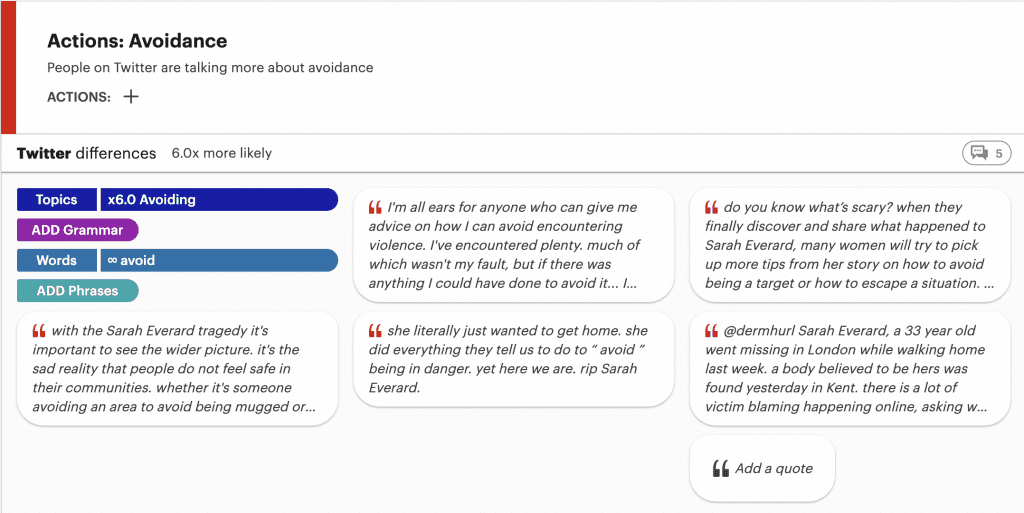Comparing Twitter commentary vs news coverage of the Sarah Everard case

By Valentina Nicoli, Commercial Associate
Just two days after International Women’s Day, Sarah Everard’s body was found in Kent, following her disappearance. This is a heart-breaking story of history repeating itself and affects every single woman who has ever walked home alone.
The fact that the tragedy feels so close to home for so many of us is why the vigil happened on Clapham Common, and why there were thousands-upon-thousands of conversations taking place on Twitter about women’s safety.
At Relative Insight we are all about the language, and we didn’t miss a chance to understand how people truly feel about this important matter, and how this compares to how it’s being reported in the press.
We used a social listening platform to collect over 10,000 tweets mentioning Sarah Everard’s case, we then converted news coverage into text files which we uploaded straight into Relative Insight and compared the two data sets.
Very interesting results came up thanks to the power of comparison. Indeed, one can clearly see that the discourse on Twitter is more emotional, while the media coverage is more factual and solution-oriented.
Twitter conversation
People on Twitter are responding to Sarah Everard’s case with profound solidarity for all women in the world, and using their words and support to show a strong sense of community. It comes as no surprise that feelings of sadness and anger are emerging. Yet, some people on Twitter talk about how lucky they feel to have to never experienced harassment, while others are increasingly talking about male privilege.


We also found that Twitter audiences are talking significantly more about the topic of avoidance, specifically in relation to having to avoid certain situations that may be considered to put women in danger – people are angry, and are keen that avoidance should not be seen as a real solution to the problem of women being attacked on the streets.


On this matter, the conversation on Twitter seems to revolve around the need to change cultural and social norms that subtly supports violence against women. People see the solution as having to educate men and boys better about not attacking women, rather than telling women not to go out, and they often raise the point about encouraging men to speak out when they see harassment, because ignoring it is akin to accepting it.


News coverage
Media coverage on the other hand largely focused on factual information rather than emotions. But perhaps the most interesting insight can be seen in relation to the news talking about women’s safety and the role of the government in this fight against women’s violence. We found that the press spoke significantly more about money and funding from the government as a solution to violence to women, rather than education.


This is just a snapshot of some of the insights we found – but no matter what the subject is, Relative Insight is essential for analysing public discourse around specific matters to give context to the conversation.
